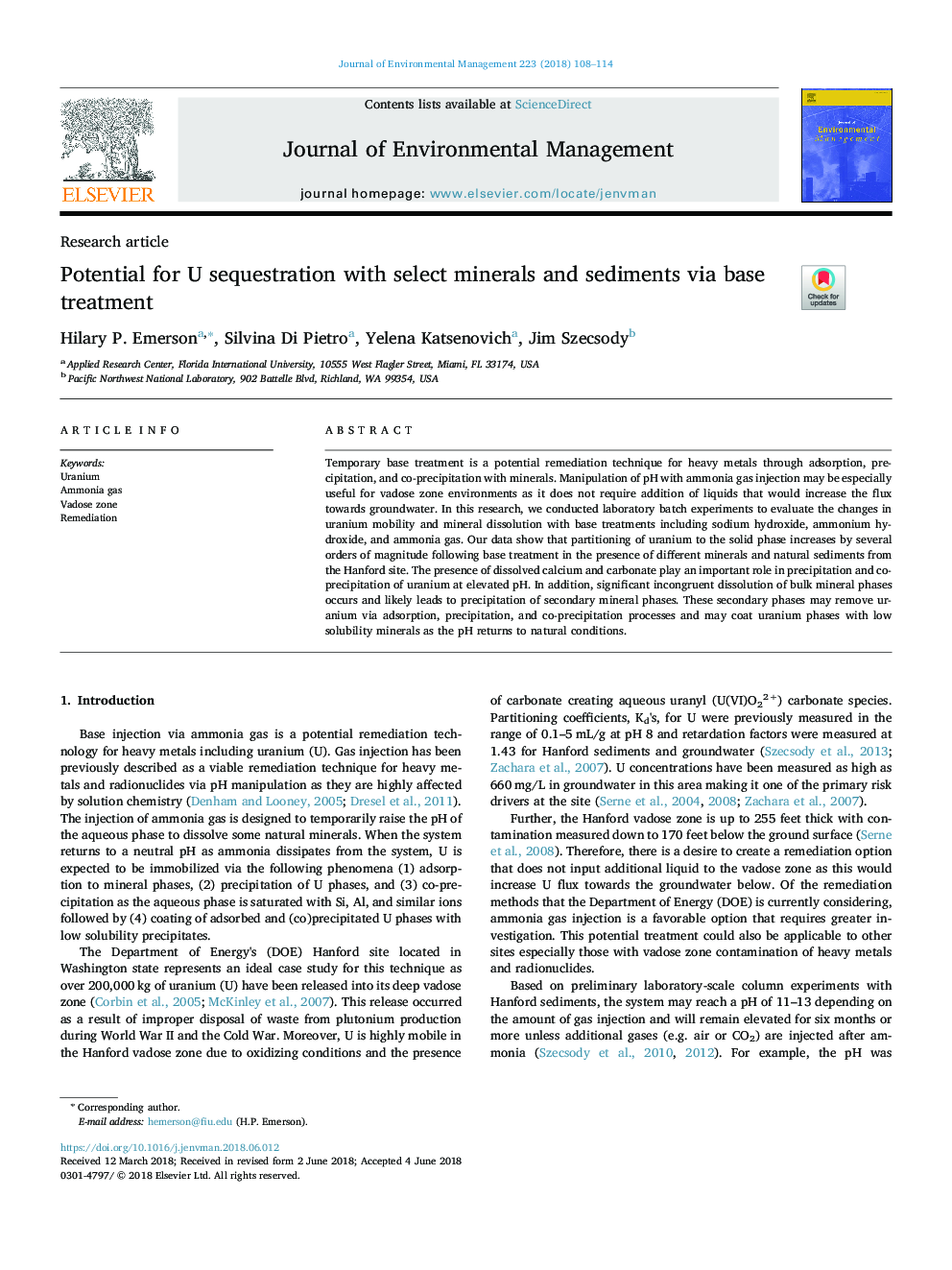| Article ID | Journal | Published Year | Pages | File Type |
|---|---|---|---|---|
| 7475781 | Journal of Environmental Management | 2018 | 7 Pages |
Abstract
Temporary base treatment is a potential remediation technique for heavy metals through adsorption, precipitation, and co-precipitation with minerals. Manipulation of pH with ammonia gas injection may be especially useful for vadose zone environments as it does not require addition of liquids that would increase the flux towards groundwater. In this research, we conducted laboratory batch experiments to evaluate the changes in uranium mobility and mineral dissolution with base treatments including sodium hydroxide, ammonium hydroxide, and ammonia gas. Our data show that partitioning of uranium to the solid phase increases by several orders of magnitude following base treatment in the presence of different minerals and natural sediments from the Hanford site. The presence of dissolved calcium and carbonate play an important role in precipitation and co-precipitation of uranium at elevated pH. In addition, significant incongruent dissolution of bulk mineral phases occurs and likely leads to precipitation of secondary mineral phases. These secondary phases may remove uranium via adsorption, precipitation, and co-precipitation processes and may coat uranium phases with low solubility minerals as the pH returns to natural conditions.
Related Topics
Physical Sciences and Engineering
Energy
Renewable Energy, Sustainability and the Environment
Authors
Hilary P. Emerson, Silvina Di Pietro, Yelena Katsenovich, Jim Szecsody,
